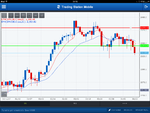There are 5 parts to a successful trading method:
1. Trend/Bias - establish the bias of the market. Is it up, down or sideways (consolidating)
2. Strength - if there is a trend, how strong is it. A simple MA cross can establish this as well as the angle of the trend/price action.
3. Cycle - there are cycles in a trend. What is the current cycle: is it in retrace or continuance. How many cycles has this trend had: 3 is average, 5 is often the maximum before a trend change.
4. Blockage - notice significant S&R levels in relation to current price. Will blockage stall the current trend or cause a retrace or consolidation.
5. Higher Time Frame - Once the above is established on the time frame of your choosing, verify the same in a time frame 3x to 4x higher. Ex: trade in a H1, verify in H4. Trade in H4, verify in Daily, etc.
If all 5 factors are in alignment, you have a high probability trade. Create rules that follow these factors and you will do well, but only if you are disciplined enough to actually follow your own rules.



